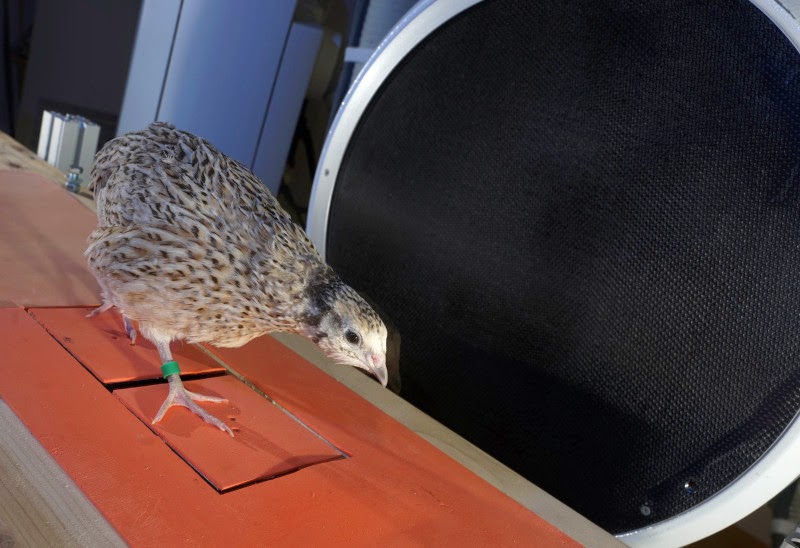
Motion scientists and zoologists at Jena University are studying the gait of birds. In the Proceedings of the Royal Society B the team published the first detailed analysis of the bipedal gait of quails. The scientists analyzed the effect of the birds’ posture on the movement of their legs and on their stability when they walk.
Dinosaurs did it. Human beings and monkey do it. And even birds do it. They walk on two legs. And although humans occupy a special position amongst mammals as they have two legs, the upright gait is not reserved only for humans. In the course of evolution many animals have developed the bipedal gait — the ability to walk on two legs.
“Birds are moving forward on two legs as well, although they use a completely different technique from us humans,” Dr. Emanuel Andrada from the Friedrich Schiller University in Jena (Germany) says. Human beings keep their upper bodies generally in an upright position and the body’s center of gravity is directly above the legs. The bodies of birds on the other hand are horizontally forward-facing, which appears to be awkward at first glance. Hence the motion scientist analyzed — together with colleagues — which effect this posture has on the movement of their legs and on their stability when they walk.
To this end the team had quails walking through a high speed X-ray installation at varying speeds. While the installation monitored the movements of the animals meticulously, the scientists were able to measure the power at work in their legs. From this data, the Jena research team could develop a computer model of the whole motion sequence, which served to simulate and analyze the stability and the energy balance in connection to different gaits.
As it turned out, the birds use the so-called “grounded running” style when they move quickly — this is a running style in which at least one leg is always touching the ground. “Even when running quickly, short periods of flight phases occur only very rarely between the individual steps,” Prof. Dr. Reinhard Blickhan, Chair of Motion Science at Jena University explains. But this is extremely energy consuming for the animals because the body’s center of gravity lies distinctly in front of their legs — due to the horizontal posture. “The animals have to constantly balance out their own bodies in order to prevent falling forwards,” says Blickhan.
But this huge effort is worthwhile as the researchers discovered with the help of their computer model. “Unlike the legs of humans which gather energy like two coil springs and use it directly to move forwards, the bird’s legs work in addition like dampers or shock absorbers.” In order to prevent falling forwards or to permanently accelerate their movement, the birds practically have to brake all the time. This happens while the bird leg is working like a spring damper: Energy is withdrawn from the leg, but the amount of energy is the same that was invested in the hip to stabilize the trunk via the turning moment.
“This apparent wasting of energy is the price for a very stable posture during locomotion, especially on an uneven terrain,” Blickhan summarizes the result of this study.
After these newly presented results, the Jena researchers anticipate interesting times ahead. They also want to test the gait of other birds with the help of the computer model they developed. And the scientists even want to analyze the locomotion of dinosaurs — the direct forebears of today’s birds. “It is not clear yet how two-legged species like Allosaurus or Tyrannosaurus Rex really moved forward,” says Dr. Andrada. But it is assumed by now that they also ran with their upper bodies thrust forwards horizontally — due to biomechanical advantages.
Reference:
E. Andrada, C. Rode, Y. Sutedja, J. A. Nyakatura, R. Blickhan. Trunk orientation causes asymmetries in leg function in small bird terrestrial locomotion. Proceedings of the Royal Society B: Biological Sciences, 2014; 281 (1797): 20141405 DOI: 10.1098/rspb.2014.1405
Note : The above story is based on materials provided by Friedrich Schiller University Jena.










